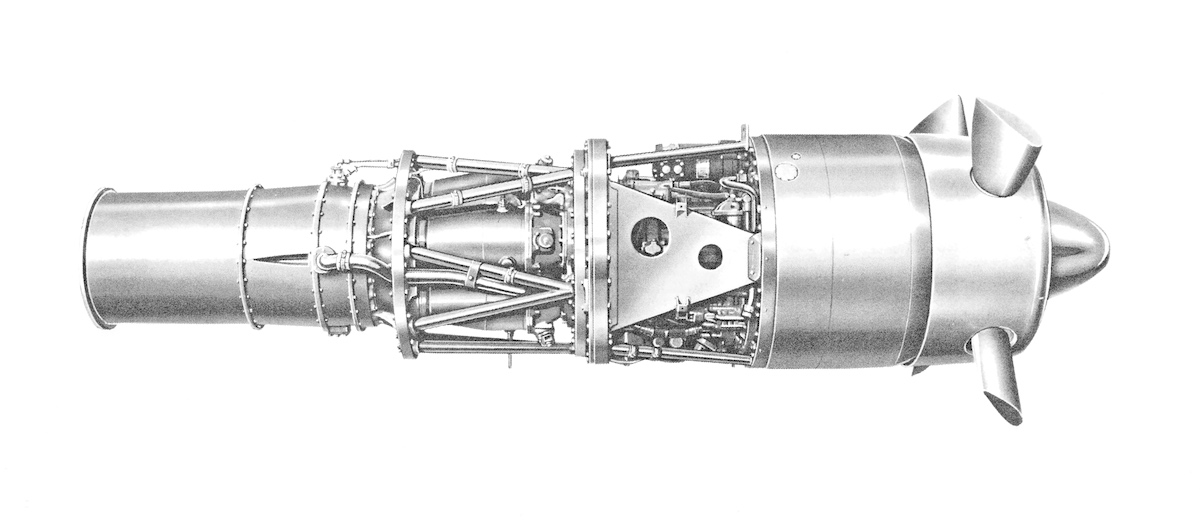Napier Naiad
Following on from the light prototype ‘Nymph‘ engine Napier’s first (and late) entry into the aero gas turbine field was in 1947 with their first major type, the E128 ‘Naiad I’ turbo-prop engine.
A contract for a 1,500 shp propeller turbine was given by the Ministry of Air to D Napier & Son in 1945 probably as a replacement for the known future loss of ‘Sabre‘ development work. This became the E128 ‘Naiad’ engine from an October 1945 design. It was built and tested before the Napier Nomad compound aero engine in 1949. Its small axial compressor was based on an existing Nomad type with 12 stages giving 5.5:1 pressure ratio running at 18,250 rpm during take off. At the hot end it had a two-stage turbine providing the power within its slim 28″ maximum diameter. By the end of 1948 it was giving 1,590 ehp in bench tests at Acton and in the Coronation Road Test Tunnels which included 240 lb jet thrust at teh take-off rating. The Naiad I gave 1,050 ehp when cruising with turbines at 17,000 rpm.
The Napier Luton Flight Development Establishment installed a Napier Naiad to fly in the nose of an Avro Lincoln which it did on reduced power at the SBAC Farnborough show whilst a mock-up of it in a Vickers airliner nacelle was exhibited on the DNS stand. The illustration above shows the mock-up at Luton FDE.
A pair of Naiads were coupled together through a double gearbox to reduce drive speed down to a single propellor shaft forming a most compact 3,000 shp engine which was the E128D engine proposed for the Fairey Gannet anti-submarine aircraft. This contract went to Armstrong-Siddley with their ‘Double Mamba’ engine leaving Napier with only castings for airflow tests at Luton.
Far more damaging than this was the loss of the turbo-prop engine contract for the Vickers Viscount airliner to the lower powered and 25% heavier Rolls-Royce Dart engine. Vickers did not trust the Naiad’s state-of-the-art axial compressor however thier decision provided Rolls with a long term order to power over 400 Viscounts. This blow to Napiers was to have a permanent adverse effect on the Company’s aero gas turbine prospects in the UK.


